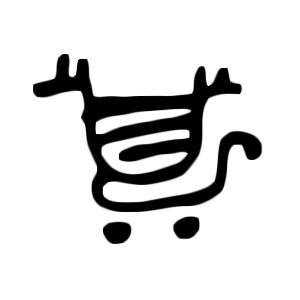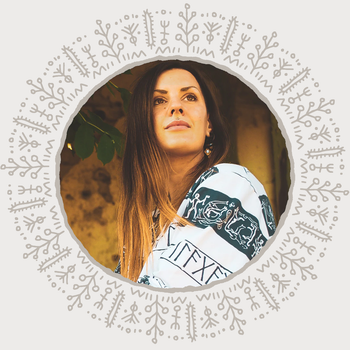The Norns
← BackI have found the norns to be,
they are not of the same family,
some are of the Aesir,
some are of the elves,
and some are of Dvalins
daughters”
Gylfaginning
they with power plied,
meanwhile fortifications broke in Brålunda;
golden links
they easily arranged
and attached midmost
underneath the hall of the moon”
Helgakviða Hundingsbana I, Stanza 3.
Besides the plying and weaving Norns there was Frigg. Frigg also spun threads out of gold and magical linen and then weaved the beautiful summer clouds. There’s also accounts of weaving in connection to the Valkyries, from the “Spearsong” Darraðarljóð (thought to be from circa 1015):
and Hjörtrimul,
Sanngrid, Svipul
with swords pulled.
Spears may shake,
shields may clash,
the beasts of combat
biting into armors.
Irish shall be stricken
by days of misfortune
to never be forgotten
by the minds of men.
Woven be the weave,
the bank blooded,
messages of death be spoken,
around the land and kingdom.
Stricken by fear
is everything to see,
dripping bloody skies
passing over the heavens,
by fallens’ injuries
the air is coloured,
when the maidens of victory
sings their song”
The story continues with that the Valkyries tear the magical war weave apart and share parts of it between themselves.
named Yggdrasil;
the tall tree trunk
is sprinkled with white gravel.
From there the dew,
as in valleys fall;
she is eternally evergreen
over the well of Urdr.
There from comes women,
who knows a lot;
three from the hall,
that underneath the tree stands upon.
Urdr is one,
the other Verdandi;
on wood they carved
Skuld as the third.
Lottery of luck,
life and death,
faiths of heroes,
everything starts with them.”
Translation out of the Voluspa, stanza 22-23, from Swedish to English. This poetry is thought to have been made during around the years 900-1100 AD.
– Elin aka MooseLady
Decades ago, I became interested in Norse Magick. In reading the mythology I felt connection. I would wonder about the spaces and gaps between the tales. When I walked my dogs I would ask into the ethers about the Gods and goddesses and wondrous stories would fill my head. Eventually as the stories numbers stacked, I would write them down in point firm on my return home. Finally, after years of this, I attempted to put them into context and some form of linearity. I assembled them into a book I named " An Absence of Freyja ". Please bear in mind that I am not a writer, and had not the finance to be aided in this endeavor, but still I felt compelled to do so. I spend zero money in the publishing of this book and have no concept of marketing, and so it just is. Your translation here regarding Dvalins daughters and the Norns is compelling as’they we’re referenced in my own channeled tales.



